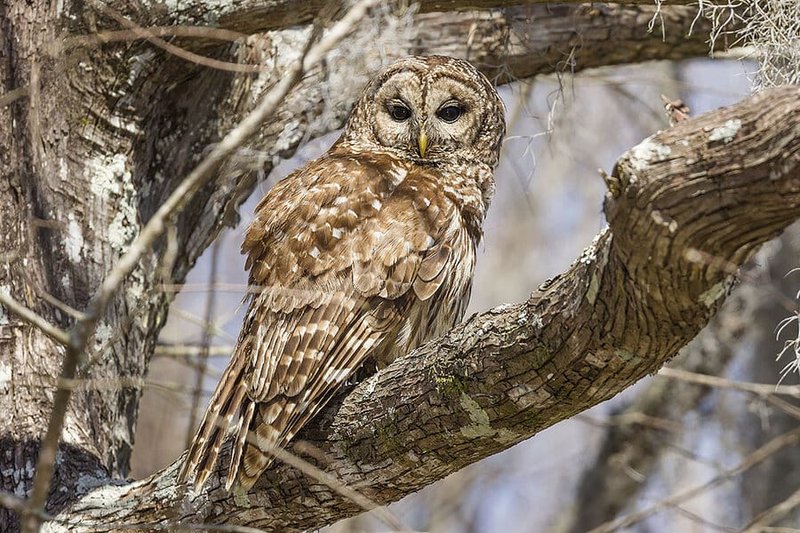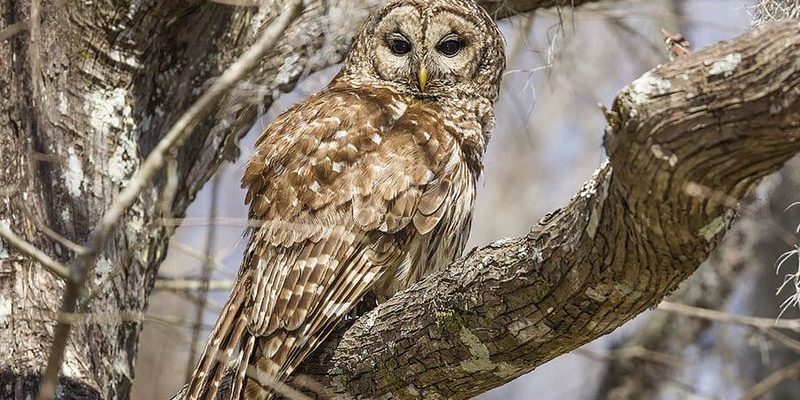
Imagine walking through a dense forest or a tranquil wetland, with the soft rustle of leaves underfoot. It’s the perfect backdrop for spotting a Barred Owl. They call various habitats home, from the lush deciduous forests of North America to the more varied landscapes of parts of Central America. Whether you’re an avid bird watcher or just someone who loves the outdoors, knowing where to find these owls adds an exciting dimension to your nature adventures.
Understanding The Barred Owl’s Habitat
Barred Owls thrive in environments that provide both shelter and hunting grounds. They prefer mature forests, especially those with a combination of hardwoods and softwoods. This diverse environment offers plenty of hiding spots during the day and abundant prey at night.
Key habitats include:
- Deciduous and mixed forests
- Swamps and wetland areas
- Riparian zones near rivers and streams
Here’s the thing: Barred Owls like areas that are relatively undisturbed. They tend to shy away from heavily urbanized places. Instead, they’re drawn to forests that provide a rich canopy and abundant nesting sites. Large trees with natural cavities or those that can be easily modified are ideal for them.
North America: The Core Range
In North America, Barred Owls are most commonly found in the eastern parts of the continent. They can range from southern Canada down to the Gulf Coast. These owls are adaptable, often found in varying topographies.
Popular states for spotting Barred Owls include:
- Florida
- Ohio
- Pennsylvania
- Washington
During nighttime, you might hear their characteristic “Who cooks for you? Who cooks for you-all?” calls, echoing through the woods. Honestly, it’s a sound that can send shivers down your spine—in a good way! Birders often gather in these regions during the fall and winter months when the owls are especially vocal, making it easier to locate them.
Exploring Their Central American Range
While Barred Owls are primarily associated with North America, their range stretches into Central America as well. Countries like Mexico, Guatemala, and Honduras are home to these fascinating birds.
In Central America, they often inhabit tropical and subtropical forests, showing off their versatility. You might find them in areas with dense underbrush and plenty of trees. Here’s a fun fact: in some regions, they can be quite bold and may come closer to human habitats, making for unique viewing opportunities!
If you ever find yourself hiking through the lush jungles of these areas, keep your eyes peeled and your ears open. Barred Owls can sometimes be spotted perched on low-hanging branches or soaring above the canopy.
The Role of Wetlands in Barred Owl Habitats
Wetlands are crucial to the Barred Owl’s survival. These areas are teeming with life, providing both cover and food sources. Frogs, small mammals, and fish are just a few examples of their prey.
In wetlands, you’ll find the Barred Owl using their excellent hearing and night vision to locate dinner. The combination of water bodies and tree cover creates a perfect hunting ground.
Some notable wetland areas include:
- The Everglades in Florida
- The Chesapeake Bay area
- Southern Louisiana
If you’re birdwatching in a wetland, you might catch sight of a Barred Owl swooping down toward the water’s edge, a masterful display of their hunting prowess.
How to Spot Barred Owls in the Wild
Finding a Barred Owl requires a bit of patience and some basic knowledge. First, try choosing a good location. As mentioned, they prefer forests and wetlands, so look for dense foliage and tall trees.
Here are some tips for spotting them:
- Visit in the evening or early morning when they are most active.
- Listen for their distinctive calls.
- Look for signs of their presence, like droppings or feathers.
- Bring binoculars and a good field guide to help identification.
You might be wondering, “What if I don’t hear them?” That’s okay! Sometimes they can be silent, especially if they’re hunting or disturbed. Just remain still and observant, and you might see one perched quietly on a branch.
Conservation Efforts and Their Impact
Barred Owls face various challenges in their habitats, including habitat loss and competition with other owl species. Conservation efforts are underway in many regions to protect their habitats and ensure they thrive.
Here’s how you can help:
- Support local wildlife organizations that focus on habitat restoration.
- Practice responsible birdwatching by minimizing disturbance to their environments.
- Spread awareness about the importance of preserving natural habitats.
You may not think it makes a difference, but small actions can add up. Every bit helps when it comes to protecting the Barred Owl and other wildlife.
Final Thoughts on Spotting Barred Owls
So, whether you’re wandering through a quiet forest or skimming the edges of a wetland, spotting a Barred Owl can be an enchanting experience. These magnificent birds are reminders of the beauty and diversity of nature.
Remember to approach their habitats with respect, and you might just be rewarded with the sight of one of these captivating creatures in action. So next time you’re out in nature, keep an ear out for those haunting calls and an eye on the branches above. Happy birdwatching!

